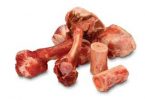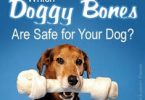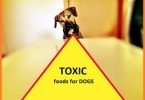There are so many myths, unwarranted fears and misconceptions surrounding a raw food diet. Many of these myths have been perpetuated by Veterinarians who do not understand carnivore nutrition. Conventional veterinarians have minimal if no training regarding the health benefits of species appropriate diets. They are taught to treat disease, not to promote health through proper feeding and diet. The nutritional training that they do receive is given by the pet food manufacturer’s who teach them how to sell their commercial food, which is nothing more than dead, processed food. SARF stands for species appropriate raw diet.
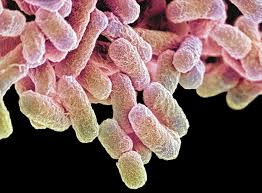
Myth#1 My dog will get E-Coli or Salmonella poisoning.
A dog’s immune system is specifically designed to handle bacteria such as E-Coli and Salmonella. Quite the contrary, feeding only processed food deprives their body from developing an immune response to these and other types of bacteria. There are bacteria, including E Coli and Salmonella all over your house right now. It is crawling on every surface in your kitchen, your bathroom and all over your skin. Yes, it’s true!
A dogs intestinal tract is short, compared to that of an omnivores, which is long and winding. Because their digestive tract is short, toxins don’t linger long before being expelled. They also have strong stomach acids (hydrochloric) which help assist them in digesting raw meat and bone. This combination of the short intestinal tract, acidic digestive systems and strong stomach acids create an environment that is not hospitable to these bacteria.
Your dog has probably eaten kitty bon bons from the litterbox, slurped his drinking water from the toilet bowl, cleaned and licked his behind, drank from mud puddles and eaten roadkill without getting ill. If your dog is in generally good health, you should have no issues with feeding raw.
Sanitary precautions are just common sense. Remember to keep your raw meat refrigerated and do not allow it to sit out for any extended period of time. Be sure to clean all counter surfaces and utensils thoroughly after each use and wash your hands after handling raw meat. Some people wear nitrile or plastic gloves when preparing raw meals.
For extra precaution you can use all natural cleaners that you mix up yourself. I mix up a combination of distilled white vinegar and add a few drops of essential oil such as tea tree, lemon, lime or thieves. I also suggest using non porous bowls such as stainless steel and wash the bowls after each and every meal.
I have been feeding 4 dogs a raw diet for over 10 years and I have never encountered a problem with bacteria or poisoning.

Myth#2. My dog will get worms
Worms thrive in a highly mucous environment. Dogs on a SARF diet have very little mucous in their system. A healthy animal has very few parasites, internal or external. A recent independent study of those feeding raw showed an extremely low incidence of worms and other parasites. I have seen many dogs in my grooming practice that have worms. All of these dogs are eating a highly processed commercial diet.

Myth #3. My veterinarian says pets die eating raw.
Sadly yes, some have died. It is rare though. Many pets die choking while eating dry kibble, nylabones and raw hides. However, thousands die each year from toxins and disease due to being fed commercial pet food. Of the deaths attributed to raw feeding most occurred because the pet owner lacked education about the diet. So do your due diligence, research and get educated.
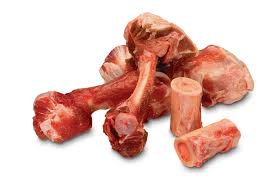
Bones-the really scary part. Dogs are known as opportunistic scavengers. They will eat practically anything. Non digestible dirt, rocks, socks, sticks, tampons, plastic squeaky toys, tennis balls and dangerous raw hides. They vomit, choke and poop out foreign objects. Every veterinarian you talk to will have stories of items dogs have ingested.
Can dog’s die from eating raw bones? Of course, however they can die from eating other foreign objects as well. Every activity carries some form of risk but many are willing to accept the risk because it is minimal compared to the benefits of feeding raw. NEVER feed cooked bones!! Cooking changes the molecular structure of the bone and can cause them to splinter. When feeding raw only do what you are comfortable feeding. If your dog is a gulper, you can hold one end of the bone while he eats it. I occasionally will do this with my gulper. I actually wear gardening gloves that I can wash after each use to protect my precious fingers. You can also feed the bones frozen, this will slow down a fast eater. You can grind or smash the bones. However, when grinding the bone the dog does not get the teeth cleaning benefits or the visceral satisfaction of chewing and gnawing the bone. Grinding will eliminate any fears you have and is perfectly acceptable.
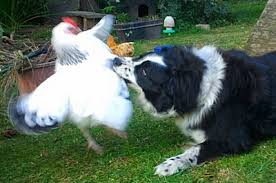
Myth #4. My dog will turn into a bloodthirsty killer or become food aggressive.
This is completely false!! Unless you allow your dog to chase and kill animals. If eating raw meat made dogs vicious, how likely is it that they evolved as protectors, herding dogs and all around working companions. For hundreds of years, dogs have hunted and eaten raw meat while bonding to their humans. It’s a stretch that dogs make the connection between a raw chicken back that comes out of the refrigerator and an actual chicken. I have seen many a dog who is not raw fed killing chickens!
Food aggression can occur no matter what type of diet you feed. This is nothing more than a behavioral issue that needs to be addressed by an experienced dog trainer.

Myth#5. A raw meat diet is too high in protein. My dog will get fat and sick.
The high water content in raw meat means this would more accurately be considered a high water diet. A raw meat diet contains 15% to 20% protein depending on the protein type, far less than the average kibble that contains 25 to 45%. Too much of a good thing, overfeeding and lack of proper exercise causes obesity.

Myth#6. They need kibble to keep their teeth clean.
Dogs don’t get cleaner teeth by eating kibble. This would be like saying potato chips clean our teeth. This is nothing more than a strategic marketing ploy. Those crunchy little nuggets of God knows what provide zero teeth cleaning benefits for big, sharp, pointy teeth. Kibble actually turns slimy when it hits moisture and gets stuck on the teeth. All that goopy mess gets smooched between their teeth and gums, fermenting away! One of the many benefits raw feeders first notice is the whiter teeth and fresher breath. One of the most common reasons people bring their pets to the vets office is for dental concerns. On average, a dental cleaning and scaling costs anywhere from $150.00 on up not to mention the fact that your dog has to be subjected to being put to sleep. A big ticket item for vets.
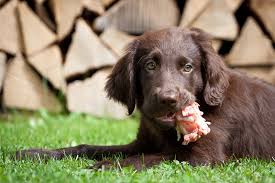
Myth #7. Raw diets are time consuming and messy to feed.
The time spent in preparation is minimal, once you get into the groove. Granted, it is not as convenient as opening a can or bag and pouring into a bowl. It just takes a little strategic planning and prepping ahead of time. You can prep a months worth of food in one sitting and freeze into daily portions.
If you feel you don’t have the time to invest, there are many commercial raw foods on the market. Some come in frozen chubs and others are freeze dried that you just add water to. The commercial diets are more costly than preparing your meals at home.
I feed my dogs in the laundry room on a tile floor, covered by a feeding mat. Some people feed outside, in their crate, or in the garage. You can also lay down newspaper, a towel or blanket. You can use old sheets, vinyl tablecloths-anything that can be easily cleaned.
For long haired dogs with beards or mustaches, the trick is to clean them quickly after they eat and before anything has the chance to dry. All natural dry shampoos work well or a moistened warm washcloth with an all natural soap. They have stretchy cloth snoods that are sold by pet suppliers for keeping long eared show dogs hairdo’s in tact, these work well to keep the dogs ears out of the way.
Myth #8. Raw diets are expensive.
There are wide regional differences in prices, and much depends on how resourceful you are and where you live. You do not have to feed organic or grass fed, although it is plus. Human grade meats are still better than processed food. You can buy all the ingredients you need at your local grocery store and you can cut costs even further by watching for sales. If you stick to a wide variety of inexpensive meats, raw meaty bones and beef hearts your dog won’t be missing anything nutrition wise and your expenses will be equal to or less than high quality kibble.
I was able to feed 4 dogs, all over 50 pounds for about $80.00 to $100.00 per month. I developed a relationship with my local butcher and was able to buy 40 pounds of chicken necks and chicken backs for $18.00. You can find offal and muscle meats cheaply at Asian markets. You can get venison and deer from local hunters in the area. You can also raise your own small prey such as rabbit and guinea pig. If you have farmers in your area, develop a relationship with them. They are great suppliers of eggs and chicken.
Feeding raw can be a lot cheaper than premium kibble, especially if you factor in savings on vet care for things like dental work, allergies, parasite control, anal gland issues, ear infections, etc.

Myth #9. My vet says “No people food!”.
As if dogs are designed to thrive on a diet consisting of bizarre, little, processed to death pellets and will somehow be harmed by actual, real food. That is an odd notion, isn’t it? One of the ways dogs adapted to co-existing with humans was by being trash eating scavengers. Early dogs learned that living with people provided them with easy pickings. If begging is an issue, that is a training problem, not a dietary one.
There is no doubt that most vets feed their dog commercial food. They have become so used to expressing anal glands, treating yeast infections and cleaning teeth that they think it is normal. While it may be common it certainly isn’t normal. If your current vet is less than enthusiastic about feeding a raw diet, you have several options. If you like your vet and have a good relationship, feed raw and say nothing. If your dog is healthy and only goes in for routine care, then there really is no need to discuss their diet. If you do decide to discuss this diet option and your vet seems interested, offer to lend them books or articles that are educational, or offer up your dog as proof that feeding bones isn’t lethal.
If your vet refuses to bend in any way, the philosophical differences may be to great to bridge. If you can’t agree to disagree, find a new vet. Call around or ask other raw feeders what vet they use. There are many veterinarians who are supportive of alternative diets and lots of whom actively promote them. Ultimately, it is your dog and you are his caretaker. Feed whatever diet you are comfortable with. Take back control of your dog’s health.
My current vet does not promote raw feeding, mainly because a large majority of folks do not do it properly. An unbalanced raw diet can be more harmful than kibble if not fed correctly. However, my vet knows my dogs and sees that they are healthy so therefore he has no qualms of my diet choice.
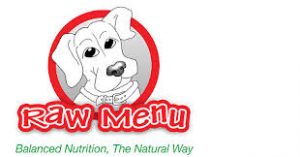
Myth #10. Raw diets are not balanced nutrition every day.
Please realize that this statement is nothing more than a meaningless advertising catch phrase. It is ridiculous to believe that all dogs get balanced nutrition from processed food in a bag. There is no such thing as a completed and balanced diet for dogs, or any animal or for people. No living organism on the planet must have every single nutrient in identical proportions for every single daily meal of their lives. If every dog food on the market was complete and balanced then every food would have to have the same ingredients and composition. And if a dog food company comes out with a new and improved formula, then what the hell have they been selling us previously? Old and inadequate formulas? Diets are balanced over time, just the way that nature intended. Most nutrients are stored and utilized as needed in your dogs bodies.
In short, your dog may live a long life on kibble. Many dogs do, depending on the strength of their immune system. But why not seek a optimally, healthy life? Bottom line, dogs are designed to eat raw meat, bones and glands. This can be proven by their digestive system and dentition. They have big, sharp pointy teeth for ripping and tearing meat and bone. They have short, acidic digestive systems for quickly processing meat and bone. They simply are not designed to eat a grain based, processed diet. Your dog should eat a healthful, fresh, raw completed and balanced diet that you lovingly provide. This will assure that your dog will thrive…not just survive.
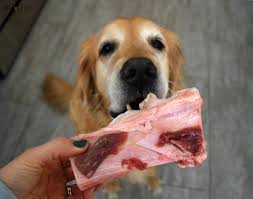
Myth #11. Raw bones will harm their teeth.
Anything is possible. Certainly, if you feed your dog nothing but kibble, and your dog never chews on anything hard, then you will avoid never having a chipped tooth-maybe. Of course, by feeding kibble you may get decaying, yellow teeth and poor gum health too which can cause heart, liver and kidney problems if the bacteria enters the bloodstream.
Larger, weight bearing bones, such as beef leg or knuckle bones are harder and it is possible that they may chip a tooth. You can safely feed rib bones to large dogs or beef neck bones to smaller dogs for recreational chewing purposes. Smaller bones like beef necks might be a quick meal for a large dog, but it would be a recreational bone for a small dog. Your dog will let you know! Rule of them-if they eat it up, it’s nutrition. If they gnaw on it for hours without ingesting it, then it’s recreational.
You should do periodic checks of your dogs teeth and watch out for any signs of discomfort or sudden unwillingness to chew. Look for signs of uneven or excessive wear. Some dogs have thinner or softer enamel and it may be smart to give them more ground RMB’s or softer RMB’s, such as chicken backs or necks, rather than big beef, femur bones. I have given my dog’s raw bones to chew on for years and never have had a broken tooth. By combining the sheer cleaning power of gnawing on bones with the benefits of a raw food diet, they have even better dental health as well as overall health with no teeth cleaning bills!
So, I urge you to do your own research before beginning a raw diet and never feed anything you are not comfortable with. Don’t accept your vets pressure to feed processed food, take back your power of attorney! Allow your dog to THRIVE!!
References:
Raw Dog Food – Carina Beth McDonald
Give Your Dog a Species Appropriate Diet-Krystal Lee Beers

